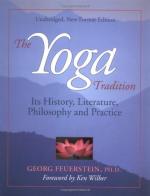|
This section contains 3,263 words (approx. 11 pages at 300 words per page) |

|
SOURCE: “Patterns of Animal Imagery in Steinbeck's ‘Flight’,” in Studies in Short Fiction, Vol. 17, No. 4, Fall, 1980, pp. 437-43.
In the following essay, Piacentino agrees with the critical assessment of the animal imagery in John Steinbeck's “Flight.”
Published initially in The Long Valley (1938), “Flight,” a work that one of Steinbeck's most discerning critics has called a tale of “frustrated young manhood,” a depressing account of an unprepared youth's failure to achieve maturity,”1 has often been regarded as one of John Steinbeck's best stories. Peter Lisca, in his analysis of the story, sees Pepé Torres' flight as reflecting two levels of meaning. “On the physical level,” Lisca observes, “Pepé's penetration into the desert mountains is directly proportional to his increasing separation from civilized man and reduction to the state of a wild animal. … The symbolic meaning of Pepé's flight moves in the opposite direction. On this level, the...
|
This section contains 3,263 words (approx. 11 pages at 300 words per page) |

|


